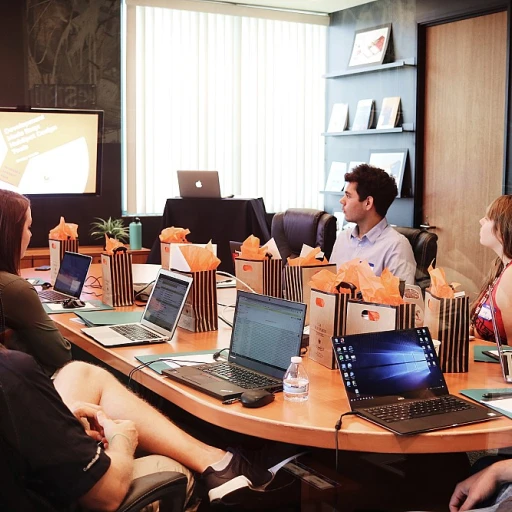The Shift to Remote Work: Impacts on Training and Development
The Evolution of Work Environments with Remote Models
The emergence of remote work has fundamentally altered the landscape of training and development. Many organizations have had to rethink how they conduct training sessions and employee development programs. Remote work presents new challenges that companies must navigate to ensure the efficacy of their employee training initiatives. With the shift to virtual formats, organizations are trying to find the best ways to engage and develop their employees without the benefit of physical interactions. Remote work disrupts conventional employee training methods that relied heavily on in-person communication and hands-on activities. For example, the traditional training programs were often designed for face-to-face interaction, allowing for immediate feedback and engagement. In remote environments, these dynamics change, necessitating new approaches and tools. This transition calls for an increased reliance on digital communication and online learning platforms, which have their own limitations and advantages. Furthermore, the success of training programs in a remote setting often requires addressing potential technology barriers. Companies are investing in various tools and platforms to facilitate learning development but must be wary of the technology challenges remote employees might face. These may include issues related to connectivity, software compatibility, and the digital literacy of remote workers. In this context, management also plays a crucial role in supporting employees to adapt to the new work environment. Proper support structures need to be established to ensure that remote employees continue to build and hone their skills efficiently and effectively. As working remotely becomes more prevalent, organizations should proactively adapt their training development strategies to prepare for the burgeoning remote workforce. For further insights, you might be interested in exploring how teachers can organize successful conferences for continuous learning projects.Technology Barriers in Remote Learning Environments
Overcoming Technological Challenges in the Remote Learning Landscape
Remote learning environments bring their unique array of technological hurdles which can impact the efficiency of training programs. Organizations transitioning to remote work must quickly adapt to new tools and platforms essential for training remote teams. A key challenge lies in ensuring that all remote employees have access to the necessary hardware and stable internet connections. Navigating these challenges requires an investment in both infrastructure and employee training. For many remote employees, especially those not accustomed to using digital platforms, unfamiliarity with technology can be a significant barrier. Hence, offering support through IT assistance and step-by-step guides can ease the transition into virtual training sessions. Proper management of digital tools is another important aspect. Employees must be trained not only in the content of the learning material but also in effective use of the digital environment for their learning development. For example, understanding how to use collaboration platforms effectively can enhance teamwork and communication. Remote workers often face difficulty in time management, especially when juggling multiple responsibilities. Training programs should be designed with flexibility in mind, allowing workers to access and engage with content at their own pace while maintaining consistency across the learning development spectrum. Communication is a vital component in conquering these technological challenges. Establishing clear lines of communication between employees and their teams ensures that any technical issues are promptly addressed, reducing disruptions during training sessions. Additionally, fostering a supportive work environment where teams feel comfortable discussing challenges leads to a more cohesive remote workforce. Ultimately, overcoming technological barriers in remote learning environments sets the foundation for successful training and development initiatives. By prioritizing access, support, and communication, organizations better prepare their remote employees for continued growth in a digitally-driven workspace.Maintaining Engagement and Motivation in Virtual Training
Engagement and Motivation in Remote Training
Navigating the complexities of remote work environments is a challenge that many teams face, particularly when it comes to training and development. Keeping remote employees engaged and motivated during virtual training sessions can be challenging, but it's crucial for the success of learning programs. One way to enhance engagement is by incorporating a variety of tools that cater to different learning styles. Interactive quizzes, videos, and discussion forums can make training sessions more dynamic and engaging. Allowing employees to collaborate in virtual team settings can also foster a sense of community, making the learning experience more relatable and less isolating. Communication plays a vital role in maintaining motivation. Clear and consistent communication from management, as well as timely feedback, can assure employees that their efforts are recognized and supported. Moreover, setting realistic deadlines and goals can help remote workers balance their work and learning time effectively. Support from leadership is also critical. Managers should ensure their teams have the resources and support needed to succeed in remote learning development. Skills development should be aligned with the employees' roles and career aspirations, which can be motivating and provide direction for professional growth. Ultimately, the key to success in remote training and development is to create a supportive and flexible work environment. Encouraging employees to take ownership of their learning and leveraging best practices in communication and engagement will foster a productive remote workforce. For more insights on how to unlock potential through skill-it, visit this deep dive into continuous learning.Assessing Learning Outcomes Remotely
Evaluating Learning Achievements from a Distance
Effectively assessing learning outcomes in a remote environment presents unique challenges, especially when traditional methods of evaluation might not translate well into virtual settings. Still, understanding the benefits and setbacks of remote training and the learning development of employees is crucial. One important factor is the choice of tools and platforms that facilitate remote learning. By incorporating software that enables comprehensive tracking of progress, companies can gain insights into employee training outcomes. These tools provide management with data-driven results, ensuring that each remote employee receives feedback that can aid their development. Yet, betwixt juggling work and remote training, there can be an increased demand for time management. Remote workers should align their professional responsibilities with their training programs effectively. This creates a structure allowing employees to maximize their learning potential and improve skills without compromising their work commitments. Remote employee training sessions can also offer greater flexibility. While this fosters self-paced learning, it can also lead to inconsistencies in evaluating learning outcomes. Implementing standardized assessments can help to level the playing field and ensure that all employees meet the desired learning objectives. Remote work environments demand the cultivation of effective communication practices. For virtual teams to function optimally, establishing protocols for regular check-ins and feedback sessions is imperative. By leveraging these best practices, training managers can identify the proficiency levels of remote teams and provide adequate support. In essence, assessing remote training requires a balanced approach that involves constant monitoring and adjusting. Companies that prioritize clear communication and comprehensive analysis tools will likely find success in overcoming the challenges remote work poses to training development. These considerations are key in promoting an efficient and supportive learning environment for remote employees.Balancing Work and Learning from Home
Finding the Right Balance
Working remotely presents unique challenges, especially when it comes to balancing work and learning from home. For employees, the lines between personal and professional life can blur, making it difficult to manage time effectively. This balance is crucial for maintaining productivity and ensuring that training and development do not fall by the wayside.
Time Management Strategies
Effective time management is essential for remote workers. Employees should consider setting clear boundaries between work and personal time. This might involve creating a dedicated workspace and establishing specific work hours. Additionally, utilizing digital tools like calendars and task managers can help remote employees prioritize tasks and allocate time for learning development.
Creating a Supportive Environment
For remote teams, management plays a critical role in fostering a supportive environment. Regular communication and feedback are vital to ensure that employees feel connected and motivated. Virtual team meetings can serve as platforms for discussing challenges and sharing best practices in training programs. Encouraging open dialogue can also lead to innovative solutions for balancing work and learning.
Integrating Learning into Daily Routines
Incorporating learning into daily routines can help remote employees enhance their skills without overwhelming their schedules. Short, focused training sessions can be more effective than lengthy programs. This approach allows workers to gradually build their skills while maintaining their work responsibilities. Furthermore, providing access to on-demand training resources enables employees to learn at their own pace.
Leveraging Technology for Flexibility
Technology offers numerous tools that can aid in balancing work and learning. From virtual classrooms to collaboration platforms, these tools can enhance the remote work environment by facilitating seamless communication and access to training resources. By leveraging these technologies, employees can adapt to the demands of remote work while continuing their professional development.
Future Trends in Remote Training and Development
Embracing the Evolution of Remote Training
The landscape of remote training and development is continuously evolving, driven by advancements in technology and shifts in workplace culture. As organizations adapt to remote work environments, they must also anticipate the future trends that will shape training programs and employee development.
Adoption of Advanced Technology
One of the most significant trends is the integration of advanced technologies. Tools such as artificial intelligence and machine learning are being leveraged to personalize training experiences and improve learning outcomes. These technologies can help identify employee skills gaps and recommend tailored training programs, enhancing the overall effectiveness of remote training sessions.
Focus on Soft Skills Development
As remote work becomes more prevalent, there is a growing emphasis on developing soft skills. Skills such as communication, teamwork, and time management are crucial for remote employees to thrive in virtual environments. Training programs are increasingly incorporating modules that focus on these areas, ensuring that employees are well-equipped to navigate the challenges of remote working.
Hybrid Learning Models
Hybrid learning models are gaining traction as organizations seek to balance the benefits of in-person and remote training. By combining virtual training with occasional in-person sessions, companies can provide a more comprehensive learning experience that caters to diverse learning styles. This approach also helps maintain engagement and motivation, as discussed in previous sections.
Enhanced Employee Support Systems
To support remote workers effectively, organizations are investing in robust support systems. This includes providing access to mental health resources, creating virtual communities for peer support, and offering flexible work-life balance options. Such initiatives are crucial for maintaining employee well-being and productivity in remote work settings.
Continuous Feedback and Assessment
Finally, continuous feedback and assessment are becoming integral to remote training programs. Regular evaluations help track employee progress and ensure that training objectives are met. By using digital tools to gather feedback, organizations can make data-driven decisions to refine their training development strategies.
As the remote workforce continues to grow, staying ahead of these trends will be essential for organizations aiming to foster a culture of continuous learning and development. By embracing these changes, companies can create a dynamic work environment that supports both employee growth and organizational success.



